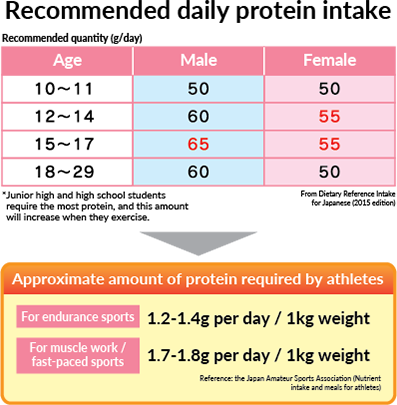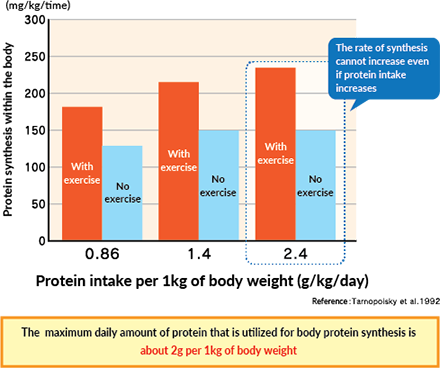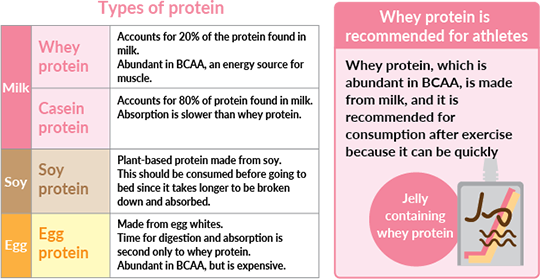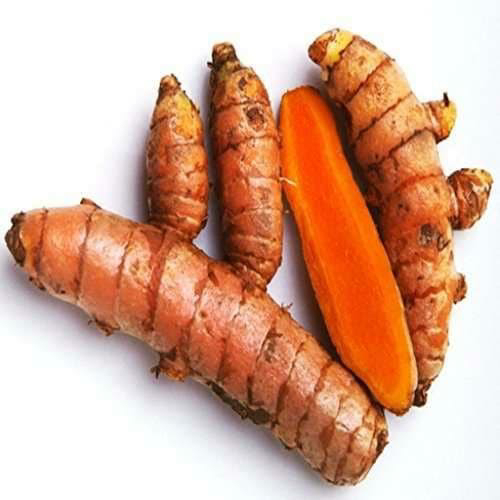Bodybuilding is centered around building your body’s muscles through weightlifting and nutrition.
Whether recreational or competitive, bodybuilding is often referred to as a lifestyle, as it involves both the time you spend in and outside the gym.
In order to maximize your results from the gym, you must focus on your diet, as eating the wrong foods can be detrimental to your bodybuilding goals.
This article explains what to eat and avoid on a bodybuilding diet and provides a one-week sample menu.
Bodybuilding Basics
Bodybuilding differs from powerlifting or Olympic lifting in that it’s judged on a competitor’s physical appearance rather than physical strength.
As such, bodybuilders aspire to develop and maintain a well-balanced, lean and muscular physique.
To do this, many bodybuilders start with an off-season followed by an in-season way of eating — referred to as a bulking and cutting phase, respectively.
During the bulking phase, which can last months to years, bodybuilders eat a high-calorie, protein-rich diet and lift weights intensely with the goal of building as much muscle as possible.
The following cutting phase focuses on losing as much fat as possible while maintaining muscle mass developed during the bulking phase. This is achieved through specific changes in diet and exercise over a period of 12–26 weeks.
Bodybuilding training and dieting is typically divided into two phases: bulking and cutting. The goal of the bulking phase is to build muscle, whereas the cutting phase is dedicated to preserving muscle while losing body fat.
Benefits of Bodybuilding
There are several health benefits associated with bodybuilding.
In order to maintain and build muscles, bodybuilders exercise frequently, performing both resistance and aerobic training.
Resistance training increases muscle strength and size. Muscle strength is highly correlated with a lower risk of dying from cancer, heart and kidney disease, as well as several other critical illnesses.
Aerobic exercise, which bodybuilders regularly implement to reduce body fat, improves heart health and significantly lowers your risk of developing or dying from heart disease — the number one killer in America.
In addition to exercise, bodybuilders also focus on their nutrition.
With careful planning, bodybuilders can eat in a way that not only supports their efforts in the gym but keeps them healthy too.
Following a healthy eating pattern, including nutrient-dense foods from all food groups in appropriate amounts, can significantly lower your risk of chronic diseases.
Bodybuilders exercise regularly and may eat well-planned and nutrient-dense diets, both of which offer many health benefits.
Calorie Needs and Macronutrients
The goal for competitive bodybuilders is to increase muscle mass in the bulking phase and reduce body fat in the cutting phase. Hence, you consume more calories in the bulking phase than in the cutting phase.
How Many Calories Do You Need?
The easiest way to determine how many calories you need is to weigh yourself at least three times a week and record what you eat using a calorie tracking app.
If your weight stays the same, the daily number of calories you eat is your maintenance calories — in other words, you’re not losing or gaining weight, but maintaining it.
During your bulking phase, it’s recommended to increase your calorie intake by 15%. For example, if your maintenance calories are 3,000 per day, you should eat 3,450 calories per day (3,000 x 0.15 = 450) during your bulking phase.
When transitioning from a bulking to a cutting phase, you would instead decrease your maintenance calories by 15%, meaning you would eat 2,550 calories per day instead of 3,450.
As you gain weight in the bulking phase or lose weight in the cutting phase, you will need to adjust your calorie intake at least monthly to account for changes in your weight.
Increase your calories as you gain weight in the bulking phase and decrease your calories as you lose weight in the cutting phase for continued progression.
During either phase, it’s recommended not to lose or gain more than 0.5–1% of your body weight per week. This ensures that you don’t lose too much muscle during the cutting phase or gain too much body fat during the bulking phase.
Macronutrient Ratio
Once you establish the number of calories you need, you can determine your macronutrient ratio, which is the ratio between your protein, carbohydrate and fat intake.
Unlike the difference in your calorie needs between the bulking and cutting phase, your macronutrient ratio does not change.
Protein and carbs contain four calories per gram, and fat contains nine.
It’s recommended that you get:-
30–35% of your calories from protein
55–60% of your calories from carbs
15–20% of your calories from fat
Here’s an example of the ratio for both a bulking and cutting phase:
Bulking phase Cutting phase
Calories 3,450. 2,550
Protein (grams) 259–302. 191–223
Carbs (grams). 474–518. 351–383
Fat (grams) 58–77. 43–57
These are general guidelines, so its best to consult with a registered dietitian to determine your individual needs based on your goals to make sure your diet is nutritionally adequate.
Bodybuilding Nutrition: Foods to Eat and Avoid
Like training, diet is a vital part of bodybuilding.
Eating the right foods in the appropriate amounts provides your muscles with the nutrients they need to recover from workouts and grow bigger and stronger.
Conversely, consuming the wrong foods or not consuming enough of the right ones will leave you with subpar results.
Here are foods you should focus on and foods to limit or avoid:
Foods to Focus On
The foods you eat don’t need to differ between the bulking and cutting phase — usually, it’s the amounts that do.
Foods to eat include:-
Meats, poultry and fish: Sirloin steak, ground beef, pork tenderloin, venison, chicken breast, salmon, tilapia and cod.
Dairy: Yogurt, cottage cheese, low-fat milk and cheese.
Grains: Bread, cereal, crackers, oatmeal, quinoa, popcorn and rice.
Fruits: Oranges, apples, bananas, grapes, pears, peaches, watermelon and berries.
Starchy vegetables: Potatoes, corn, green peas, green lima beans and cassava.
Vegetables: Broccoli, spinach, leafy salad greens, tomatoes, green beans, cucumber, zucchini, asparagus, peppers and mushrooms.
Seeds and nuts: Almonds, walnuts, sunflower seeds, chia seeds and flax seeds.
Beans and legumes: Chickpeas, lentils, kidney beans, black beans and pinto beans.
Oils: Olive oil, flaxseed oil and avocado oil.
Foods to Limit
While you should include a variety of foods in your diet, there are some you should limit.
These include:
Alcohol: Alcohol can negatively affect your ability to build muscle and lose fat, especially if you consume it in excess.
Added sugars: These offer plenty of calories but few nutrients. Foods high in added sugars include candy, cookies, doughnuts, ice cream, cake and sugar-sweetened beverages, such as soda and sports drinks.
Deep-fried foods: These may promote inflammation and — when consumed in excess — disease. Examples include fried fish, french fries, onion rings, chicken strips and cheese curds.
In addition to limiting these, you may also want to avoid certain foods before going to the gym that can slow digestion and cause stomach upset during your workout.
These include:
High-fat foods: High-fat meats, buttery foods and heavy sauces or creams.
High-fiber foods: Beans and cruciferous vegetables like broccoli or cauliflower.
Carbonated beverages: Sparkling water or diet soda.
Bodybuilding Supplements
Many bodybuilders take dietary supplements, some of which are useful while others are not.S
Trust
The best bodybuilding supplements include:
- Whey protein: Consuming whey protein powder is an easy and convenient way to increase your protein intake.
- Creatine: Creatine provides your muscles with the energy needed to perform an additional rep or two. While there are many brands of creatine, look for creatine monohydrate as it’s the most effective Trusted So
- Caffeine: Caffeine decreases fatigue and allows you to work harder. It’s found in pre-workout supplements, coffee or tea.Source
A multi-vitamin and mineral supplement may be helpful if you’re limiting your calorie intake in an effort to reduce body fat during your cutting phase.
One-Week Sample Menu
Monday
Breakfast: Scrambled eggs with mushrooms and oatmeal.
Snack: Low-fat cottage cheese with blueberries.
Lunch: Venison burger, white rice and broccoli.
Snack: Protein shake and a banana.
Dinner: Salmon, quinoa and asparagus.
Tuesday
Breakfast: Protein pancakes with light-syrup, peanut butter and raspberries.
Snack: Hard-boiled eggs and an apple.
Lunch: Sirloin steak, sweet potato and spinach salad with vinaigrette.
Snack: Protein shake and walnuts.
Dinner: Ground turkey and marinara sauce over pasta.
Wednesday
Breakfast: Chicken sausage with egg and roasted potatoes.
Snack: Greek yogurt and almonds.
Lunch: Turkey breast, basmati rice and mushrooms.
Snack: Protein shake and grapes.
Dinner: Mackerel, brown rice and salad leaves with vinaigrette
Thursday
Breakfast: Ground turkey, egg, cheese and salsa in a whole-grain tortilla.
Snack: Yogurt with granola.
Lunch: Chicken breast, baked potato, sour cream and broccoli.
Snack: Protein shake and mixed berries.
Dinner: Stir-fry with chicken, egg, brown rice, broccoli, peas and carrots.
Friday
Breakfast: Blueberries, strawberries and vanilla Greek yogurt on overnight oats.
Snack: Jerky and mixed nuts.
Lunch: Tilapia fillets with lime juice, black and pinto beans and seasonal veggies.
Snack: Protein shake and watermelon.
Dinner: Ground beef with corn, brown rice, green peas and green beans.
Saturday
Breakfast: Ground turkey and egg with corn, bell peppers, cheese and salsa.
Snack: Can of tuna with crackers.
Lunch: Tilapia fillet, potato wedges and bell peppers.
Snack: Protein shake and pear.
Dinner: Diced beef with rice, black beans, bell peppers, cheese and pico de gallo.
Sunday
Breakfast: Eggs sunny-side up and avocado toast.
Snack: Protein balls and almond butter.
Lunch: Pork tenderloin slices with roasted garlic potatoes and green beans.
Snack: Protein shake and strawberries.
Dinner: Turkey meatballs, marinara sauce and parmesan cheese over pasta.
Thanks for reading .
Stay healthy and stay fit.























